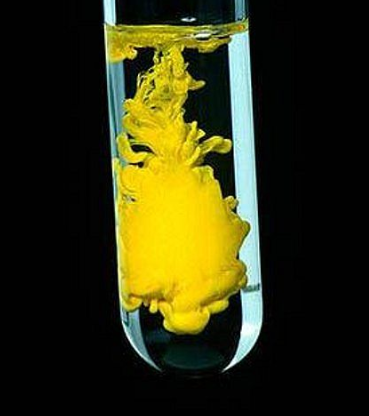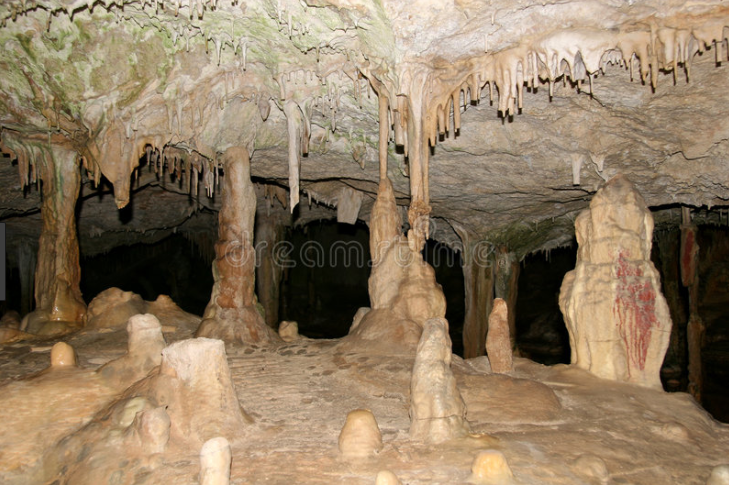In this section we will study precipitation reactions. Many salts have low solubility in water and form precipitates. In the image we can see the formation of the lead iodide precipitate when mixing solutions of potassium iodide and lead nitrate.
$2I_{(aq)}^{-}+Pb_{(aq)}^{2+}\rightarrow PbI_{2(s)}$

Precipitation reactions are of great importance in the separation of ions using the fractional precipitation technique. This technique can be used both at the laboratory level to determine the amounts of an ionic compound present in a solution, and at the industrial level to recover certain metals from liquid effluents, either for economic or environmental interest.
Precipitation reactions also allow us to explain the formation of the colorful stalactites and stalagmites that form in caves due to seepage of water rich in calcium salts, mainly carbonates.

The solubility of the salts is strongly affected by the pH of the medium, as well as by the formation of certain complexes, which is why we cannot study the subject in isolation and we will have to resort frequently to concepts studied in previous topics.



